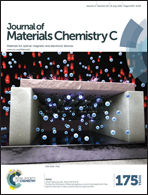Benzothiadiazole and its π-extended, heteroannulated derivatives: useful acceptor building blocks for high-performance donor–acceptor polymers in organic electronics
Abstract
The past five years have witnessed significant achievements in the field of flexible, stretchable, and printable organic electronics, especially polymer-based organic photovoltaics (OPVs) and organic field-effect transistors (OFETs), which have become competitive to their inorganic counterparts. One of the main driving forces attributed to this remarkable progress is the rapid development of semiconducting polymeric materials. Therefore, the design and synthesis of new building blocks for efficient polymer semiconductors have attracted increasing attention from both the academic and industrial communities. This review attempts to critically summarize the recent advances with respect to the electron-deficient building blocks based on benzothiadiazole and its π-extended, heteroannulated derivatives, which have been mostly developed over the past five years for constructing π-conjugated polymers, particularly donor–acceptor (D–A) polymers. Semiconducting polymers containing these building blocks have demonstrated interesting properties and promising performances as active layers in OPVs and OFETs. The structural implications related to the performances of organic electronic devices are discussed.

- This article is part of the themed collection: 2016 Journal of Materials Chemistry C Most Accessed Manuscripts

 Please wait while we load your content...
Please wait while we load your content...